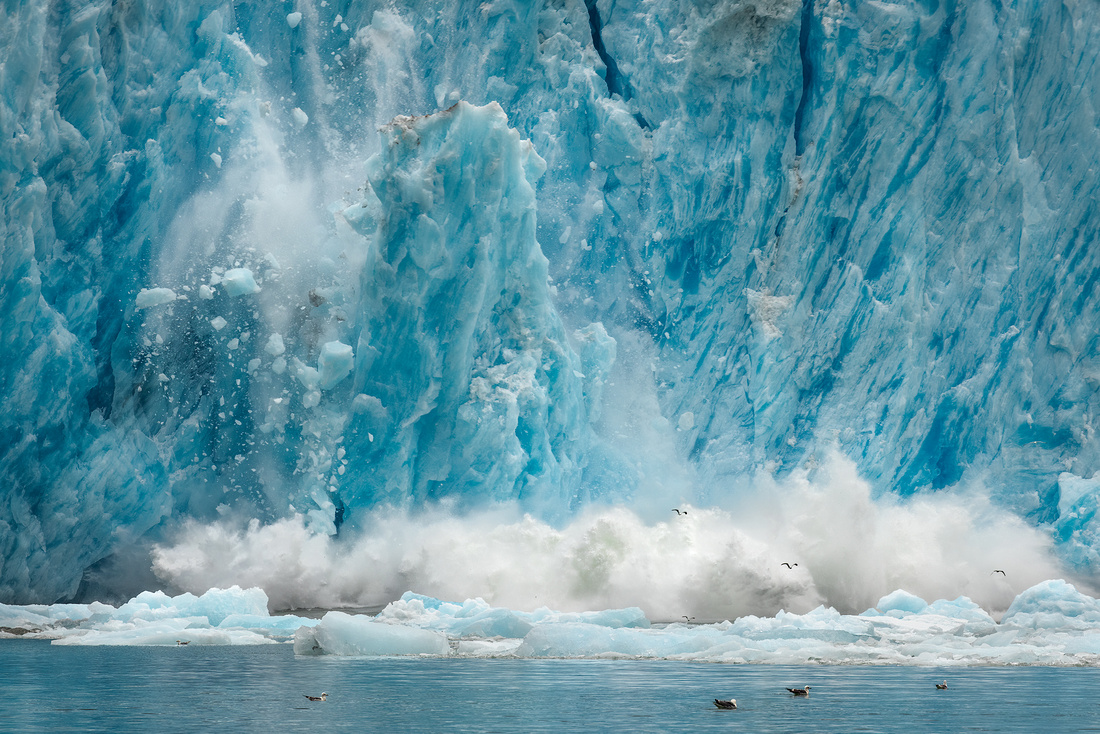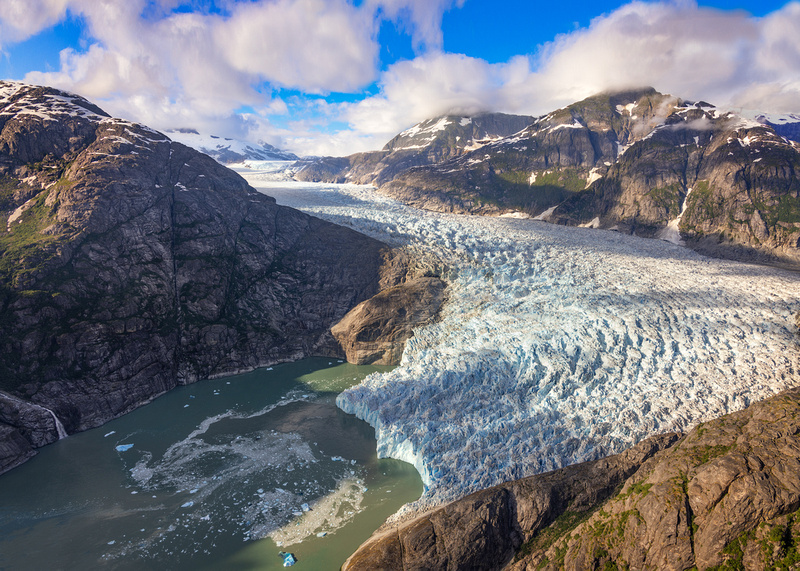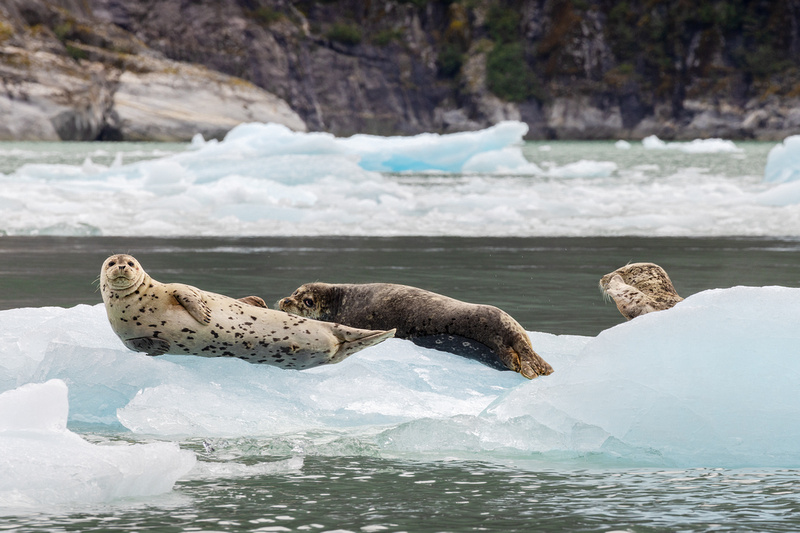A Glacial Morning


There are so many unique and stunning places to see in Alaska. The LeConte Glacier is right at the top of the list. And I had a chance to photograph it from a boat and from a helicopter during last summer’s Alaska trip.
The 21-mile long LeConte Glacier is the southernmost tidewater glacier in the Northern Hemisphere. It was named in honor of California geologist Joseph LeConte in 1887 by U.S. Navy Lieutenant-Commander Charles Thomas. The indigenous Tlingit called it “Huti,” which is derived from a mythical bird that produced sounds of thunder when it flapped its wings.
The glacier flows down from the massive 2,500 square mile Stikine Ice Field that straddles the border between Alaska and British Columbia along the Coast Mountains. It covers the crest of these mountains as far south as Ketchikan and as far north as the St. Elias Mountain range. It terminates in LeConte Bay, a sinuous, 15-mile-long fjord.
At the head of LeConte Bay, glacial ice towers 200 feet above the waterline. Another 500 feet is hidden from sight below the water. It flows into the sea at an astonishing 50 to 82 feet per day.


LeConte Bay and Glacier from the open door of my helicopter.
The glacier is known for its many "shooter" icebergs. Icebergs calve off underneath the water (LeConte Bay is 810 feet deep) and then shoot up and out of the water due to their buoyancy. Along with the icebergs that break off its face, the bay is frequently clogged, preventing boats from getting all the way to the head of the bay!
Historically, the nearby Petersburg fishing fleet used ice calved from the glacier to pack their catch. Since its discovery, the glacier has retreated nearly 2.5 miles. It appears to have stabilized its position.
The Shot
We stayed at the Tides Inn Hotel in Petersburg located next to and downwind from the fish processing plant. The fresh, bracing sea air felt wonderful as we boarded our boat and departed for the glacier.
Along the way, we noticed some other sightseers.


The next few hours were spent holding our heavy telephoto lenses pointed at the glacier. When we noticed some ice starting to move, we quickly pivoted and fired off a burst of photographs. Sometimes, I was too late to catch a decisive moment and at other times I failed to frame the shot correctly.
This calving iceberg image was my favorite.
Thanks for looking,
Chuck Derus